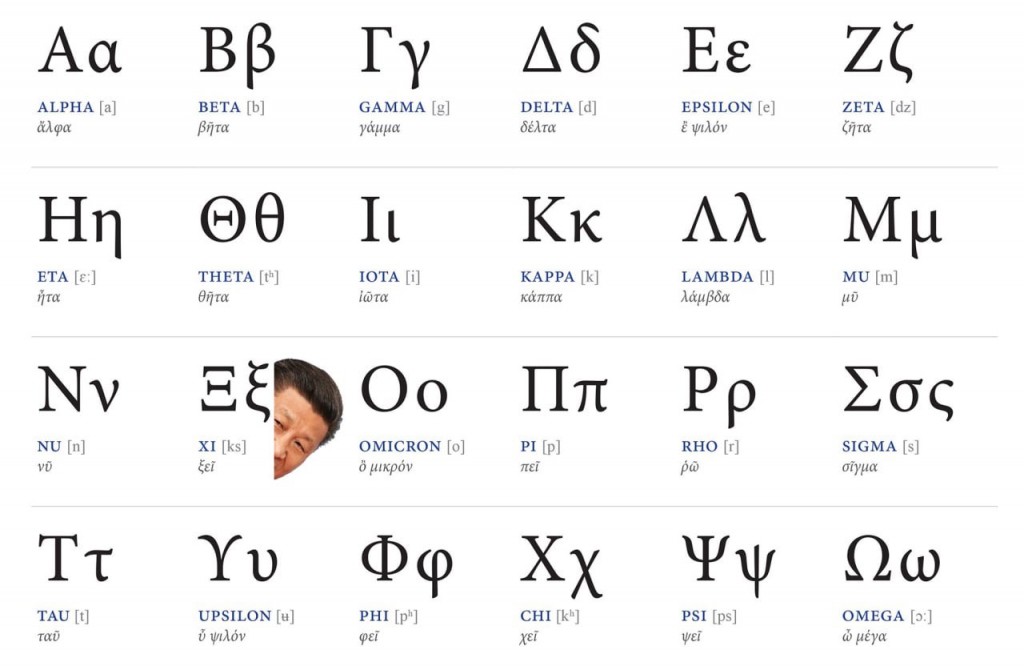Archive for Alphabets
February 7, 2022 @ 4:14 pm· Filed by Victor Mair under Alphabets, Writing systems
From Connected (2/4/22), a publication of the Peabody Essex Museum:
"Phillips Library digitizes dictionaries from Vietnam and unlocks stories of museum founders and their travels", by Kathlene Baldanza
The blog post is accompanied by beautiful images of pages from the dictionaries. Here are the first three paragraphs:
Two recently digitized manuscript dictionaries in the Phillips Library collection are once again sparking conversation. In 1819, John White, a lieutenant in the US Navy, received dictionaries from an Italian Catholic priest named Joseph Morrone in Saigon and deposited them with the East India Marine Society in Salem. The members of the East India Marine Society were the founders of what is today the Peabody Essex Museum. Published in the US in 1838, the dictionaries fueled a trans-Atlantic debate about the nature of Asian languages. Catholic missionaries, their Vietnamese interlocutors, and Salem mariners made the initial connections that allowed for the scholarly conversation that played out in the pages of journals including The North American Review, The Foreign Quarterly Review, and The Canton Register.
Read the rest of this entry »
Permalink
January 30, 2022 @ 1:19 am· Filed by Victor Mair under Alphabets, Language play, Silliness, Writing systems
From Dotno Pount:
I received this poster in Chinese and thought you would enjoy it! It captures the Catch-22 of talents and careers very nicely, I think.

Read the rest of this entry »
Permalink
January 7, 2022 @ 4:57 pm· Filed by Victor Mair under Alphabets, Language and archeology, Language and fashion, Language and literature
Earlier this week, my brother Thomas sent me the following note:
I recently read Beautiful World, Where Are You?, the latest novel by Irish millennial author Sally Rooney. As soon as I finished the book I started finding articles about her, including the famous Sally Rooney bucket hat. If you don't yet know about it, put Sally Rooney bucket hat into Google and you'll feel like you've been shipwrecked on a deserted island since the book came out in September.
I'm not sure if SR will go down in literary history, but I will say I can't stop thinking about the book. It's one of the few books I've read lately in which the characters discuss the big ideas: politics, religion, sex, and the collapse of civilizations.
The last is of great importance because the two main female characters are unmarried single women, and they're wondering why they don't yet feel the need to settle down and start families. Will they ever?
Read the rest of this entry »
Permalink
January 6, 2022 @ 10:01 am· Filed by Victor Mair under Alphabets, Spelling
From Agni Gopireddy (the title is as they gave it):
If one likes the idea, one may be able to use it for pinyin advocacy. The reason for this idea is mainly to make pinyin take up less space, which would mitigate one of the disadvantages it has relative to Chinese characters. Here are some mockups of how such an idea would look:
Read the rest of this entry »
Permalink
December 29, 2021 @ 9:47 am· Filed by Victor Mair under Alphabets, Diglossia and digraphia, Humor, Language play, Writing systems
Occasionally I see pinyin (spelling) interspersed with Sinographs (usually for phonetic annotation), but this one threw me for a loop:
Yěxǔ (jué duì) shì, gāi lǐngyù zuì qiángdà de jiǎngzhě zhènróng.
也许(jué duì)是,该领域最强大的讲者阵容。
"Perhaps (definitely) it's the case that this is the strongest lineup of speakers in this field.
It occurs about two thirds of the way down in this Chinese article.
Read the rest of this entry »
Permalink
December 21, 2021 @ 10:41 pm· Filed by Victor Mair under Alphabets, Romanization, Spelling, Topolects
Tweet from Alan DAI:
[Click on the photograph to see the complete Twitter thread, which has additional illustrations of printed Latinxua texts.]
Read the rest of this entry »
Permalink
November 28, 2021 @ 12:55 pm· Filed by Victor Mair under Alphabets, Language and medicine, Language and politics, Names
"WHO — You cannot be Xi-rious! The WHO’s decision to skip the Greek letter Xi in its ludicrous naming system shows exactly who controls it", by David Spencer, Taiwan News, Contributing Writer, 2021/11/28:

(source)
Read the rest of this entry »
Permalink
October 24, 2021 @ 2:18 pm· Filed by Victor Mair under Acronyms, Alphabets, Diglossia and digraphia, Writing systems
Since the vast majority of inputting in the PRC is done via Hanyu Pinyin, netizens are thoroughly familiar with the alphabet and use it regularly as part of the Chinese writing system.
One common usage for the alphabet in the PRC is acronymically to designate frequently encountered Mandarin phrases. In "The Chinese Internet Slang You Need to Know in 2021", CLI (10/19/21), Anias Stambolis-D'Agostino introduces six popular online acroyms:
1. yyds (永远的神)
永远的神 (yǒngyuǎn de shén; yyds) means “eternal God” and describes an outstanding person or thing. It's similar to the saying GOAT (Greatest of All Time) in English. The phrase is often used by fans to praise their idols or simply to describe something they are fond of.
For example:
-
- 桂林米粉太好吃了,桂林米粉就是yyds!
- Guìlín mǐfěn tài hàochī le, Guìlín mǐfěn jiùshì yyds.
- Guilin rice noodles are delicious, they’re just yyds!
Here's another example:
-
- 李小龙的中国功夫太厉害了,他就是yyds!
- Lǐxiǎolóng de Zhōngguó gōngfū tài lìhài le, tā jiùshì yyds
- Bruce Li’s kung fu skills are so good, he’s such a yyds!
Read the rest of this entry »
Permalink
September 25, 2021 @ 8:59 am· Filed by Victor Mair under Alphabets, Language and entertainment, Language and music, Writing systems
My first acquaintance with the word "karaoke" was back in the 1980s, when I was visiting my brother Denis, who was then a translator for Foreign Languages Press in Beijing. He lived in the old Russian-built Friendship Hotel, a very spartan place compared to today's luxury accommodations in big Chinese cities. There wasn't much unusual, interesting, or attractive about the place (though they had bidets in the bathrooms, as did many other Russian style accommodations in China at that time), but I was deeply intrigued by a small sign at the back of one of the buildings that led to a basement room. On it was written "kǎlā OK 卡拉OK". The best I could make of that novel expression was "card pull OK," and I thought that it might have something to do with documentation. I asked all my Chinese scholar friends what this mysterious sign meant, but not one of them knew (remember that this was back in the mid-80s). It was only when I returned to the United States that I realized kǎlā OK 卡拉OK was the Chinese transcription for Japanese karaoke. It took a lot more time and effort before I figured out that karaoke is the abbreviated Japanese translation-transliteration of English "empty orchestra," viz., kara (空) "empty" and ōkesutora (オーケストラ). When I reported this to my Chinese linguist friends (Zhou Youguang, Yin Binyong, and others) back in Beijing the next year, they were absolutely flabbergasted. They had been convinced that the OK was simply the English term meaning "all right," but they had no idea what to make of the kǎlā portion.
Read the rest of this entry »
Permalink
July 26, 2021 @ 5:10 am· Filed by Victor Mair under Alphabets, Elephant semifics, Errors, Information technology, Lost in translation
[This is a guest post by Bernhard Riedel]
I stumbled across what was probably a mis-MT in the context of the Olympic Games. (article in Korean)
"During a foot kick on the way to the gold medal, some hangul became visible. But…"
On the black belt of the athlete from Spain, one can see "기차 하드, 꿈 큰" which is wonderful gibberish. Netizens in Korea were puzzled but also quick to guess an erroneous machine translation.
기차(汽車): (railway) train (definitely *not* related to "to train")
하드: (en:hard, transliterated)
꿈: dream (noun built from the verb 꾸다(to dream) with the nominalizer ㅁ/음)
큰: big (from the verb 크다) in the form used when modifying a noun that follows
Read the rest of this entry »
Permalink
June 26, 2021 @ 5:25 am· Filed by Victor Mair under Alphabets, Romanization
I can't think of another language in the world where the Romanization situation is more chaotic than it is for Korean. There are seven schemes in common use:
Permalink
May 14, 2021 @ 8:33 am· Filed by Victor Mair under Alphabets, Headlinese, Language teaching and learning, Languages, Writing systems
Johnson, in the Economist (5/7/21), has an enjoyable article: "Some languages are harder to learn than others — but not for the obvious reasons".
Here's the first part of the article:
When considering which foreign languages to study, some people shy away from those that use a different alphabet. Those random-looking squiggles seem to symbolise the impenetrability of the language, the difficulty of the task ahead.
So it can be surprising to hear devotees of Russian say the alphabet is the easiest part of the job. The Cyrillic script, like the Roman one, has its origins in the Greek alphabet. As a result, some letters look the same and are used near identically. Others look the same but have different pronunciations, like the p in Cyrillic, which stands for an r-sound. For Russian, that cuts the task down to only about 20 entirely new characters. These can comfortably be learned in a week, and soon mastered to the point that they present little trouble. An alphabet, in other words, is just an alphabet. A few tricks aside (such as the occasional omission of vowels), other versions do what the Roman one does: represent sounds.
Read the rest of this entry »
Permalink


